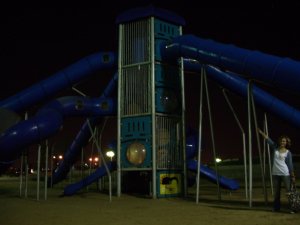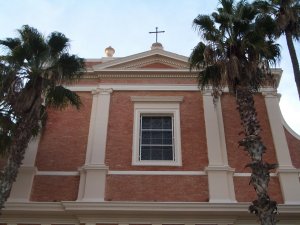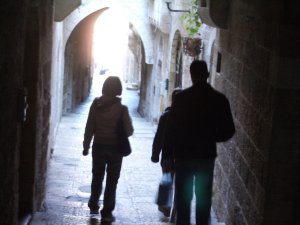I have only been here three weeks, but it feels like months already. Or maybe a lifetime.
I was worried about living away from home for the first time, but fortunately I’ve been too buys to get terribly homesick. Between the heavy load of schoolwork I have here, the articles I write for work, and my sightseeing…um…obligations, I never have a spare moment. This semester seems pretty relaxing compared to last semester, however. Taking a full-time schedule of classes and working three jobs nearly killed me. : )
We weren’t allowed in the Old City yesterday. Since Tuesday there has been a lot of unrest because of the situation in Gaza. If you haven’t been following the situation there, here it is in a nutshell: Hamas launched airstrikes on Israeli settlements from Gaza, so the Israeli government shut off Gaza’s fuel and other resources. On Tuesday, Hamas operatives blew down the border wall between Gaza and Egypt, and now hundreds of thousands of Palestinians from Gaza are pouring into Egypt to buy fuel and food. More than seven miles of the wall has been torn down, and the refugees have been flooding the border ever since.
We are leaving for Egypt tomorrow morning for eight-day trip. We’ll be crossing the Israel-Egypt border sometime tomorrow afternoon. We’ll have an armed guard on each of our busses, and we’re all hoping that there won’t be any complications–keep your fingers crossed!
Jerusalem is a true melting pot of Muslims, Palestinian Christians, Russian Jews and Christians, and Jews from all nations. But once we cross the border into Egypt, we’ll be in a land that is almost entirely Muslim. It will be an eye-opening experience, I’m sure.
We wont’ have computer access in Egypt, so I won’t be posting for a while. I love you all! Until after Egypt!



















